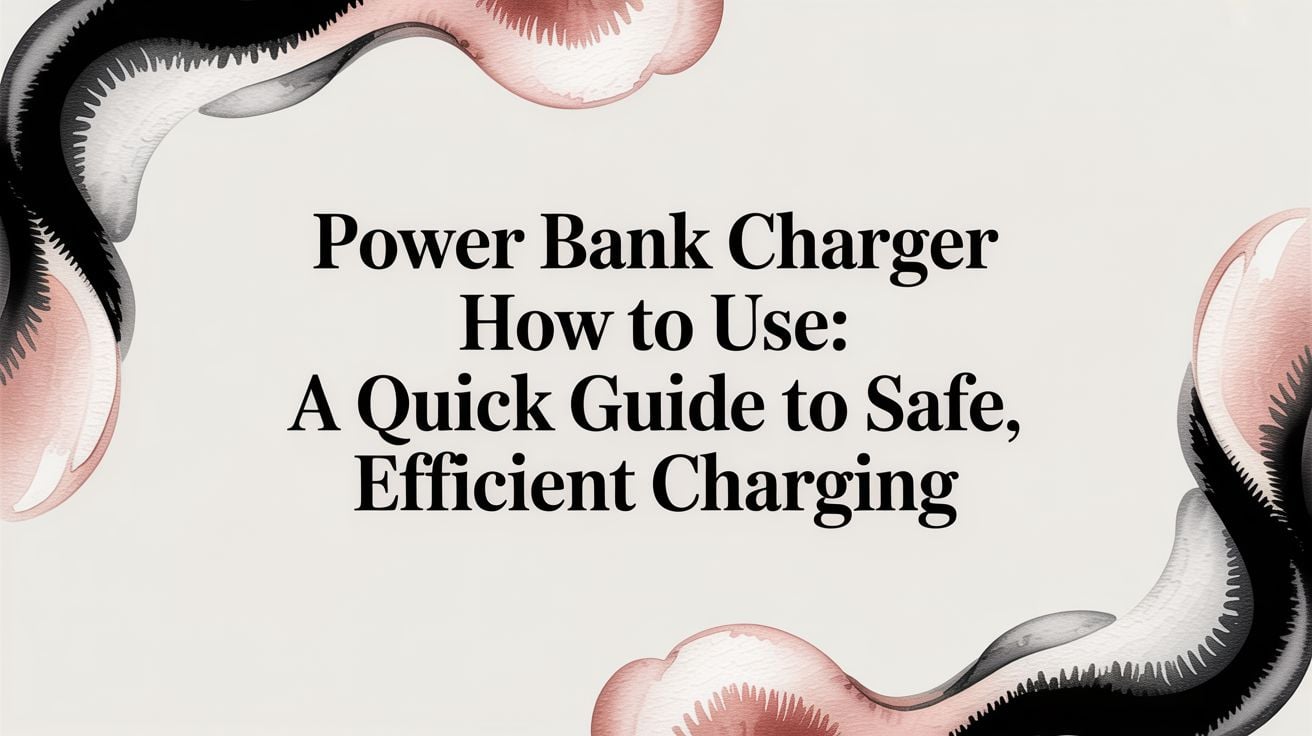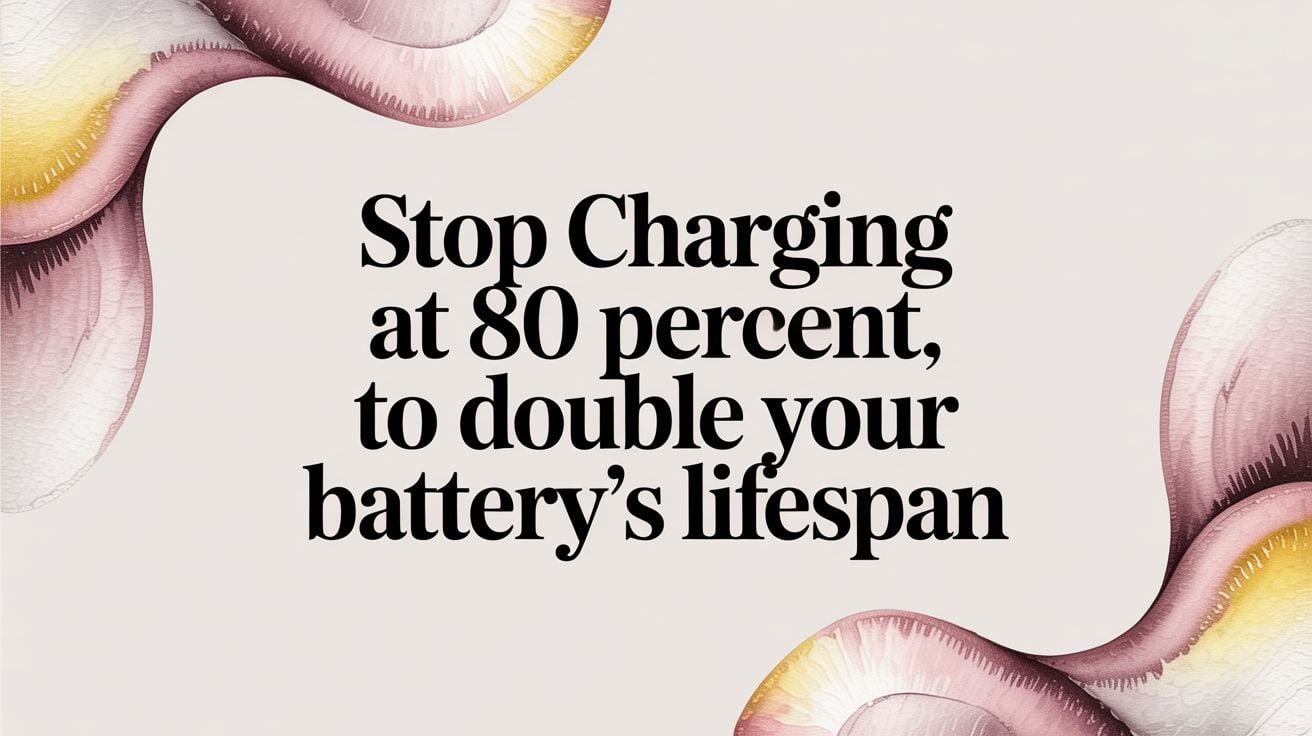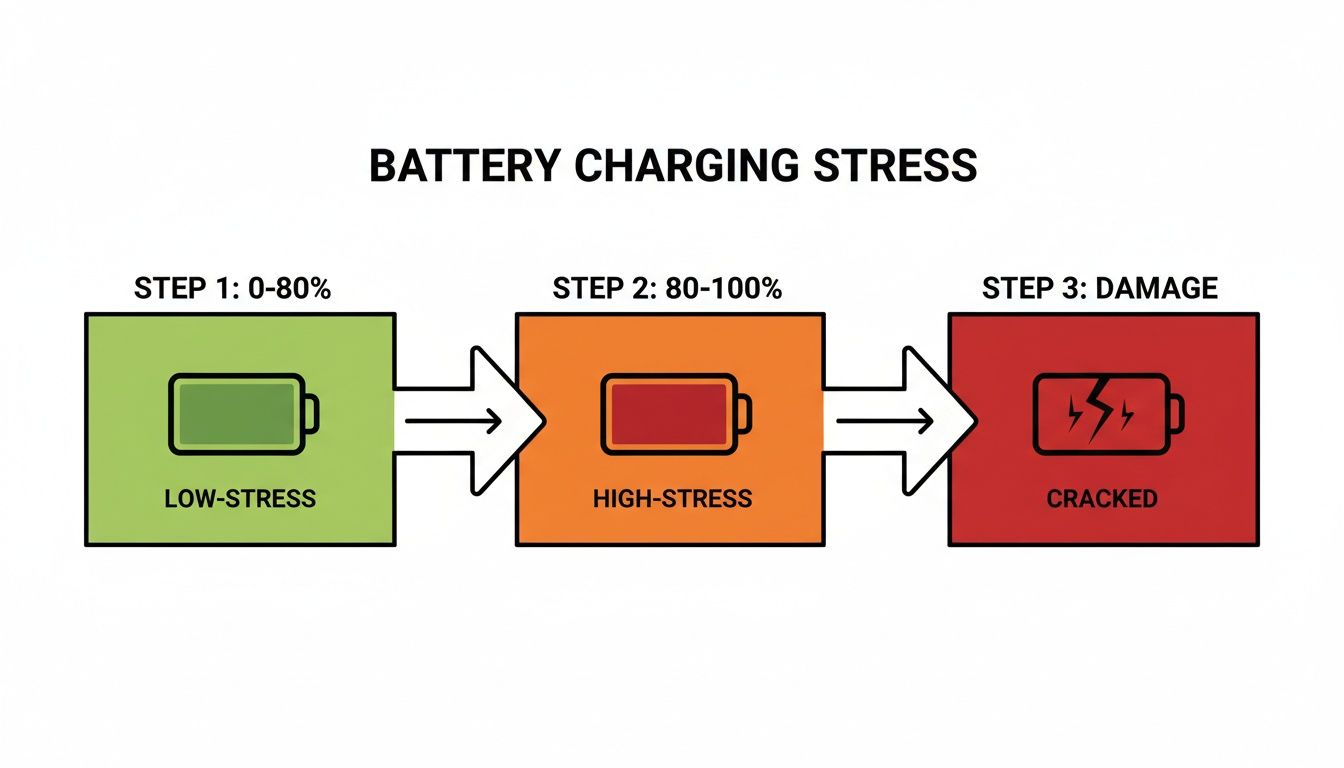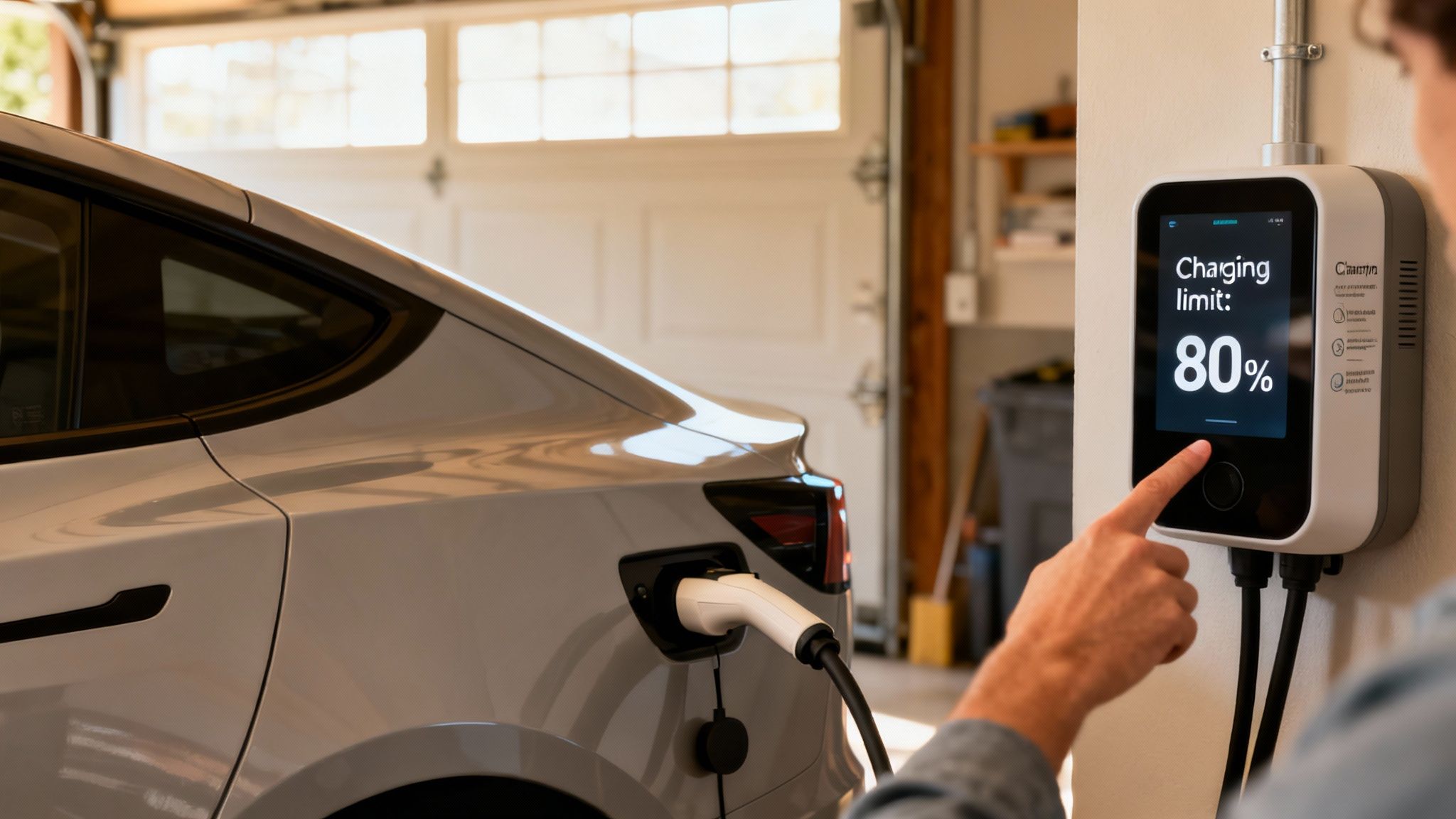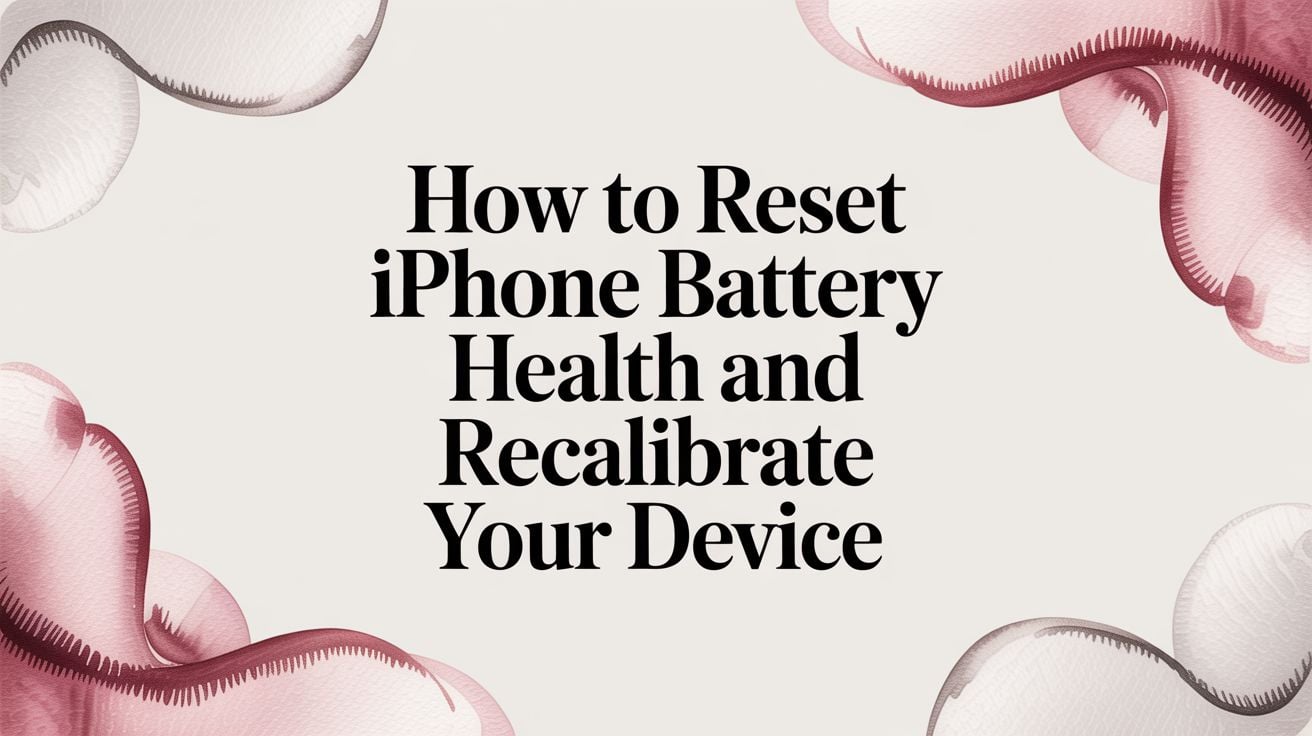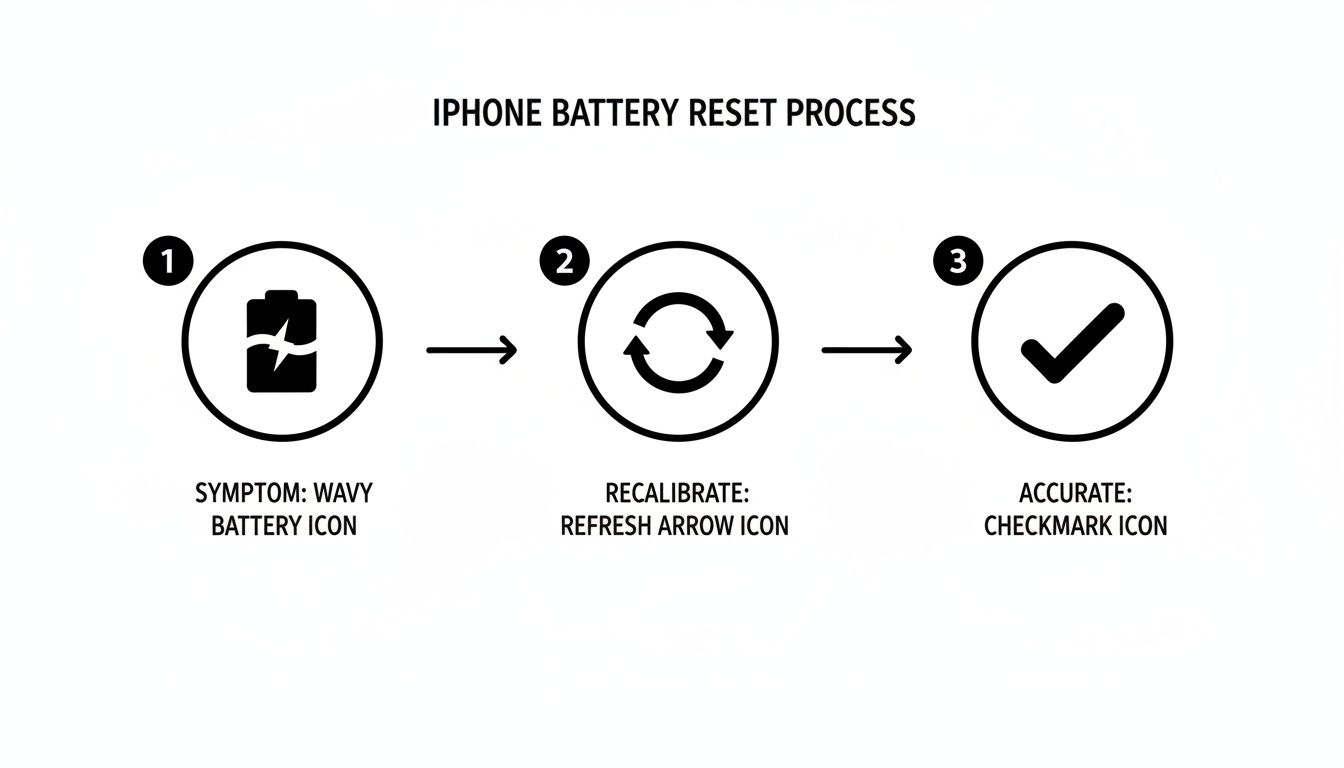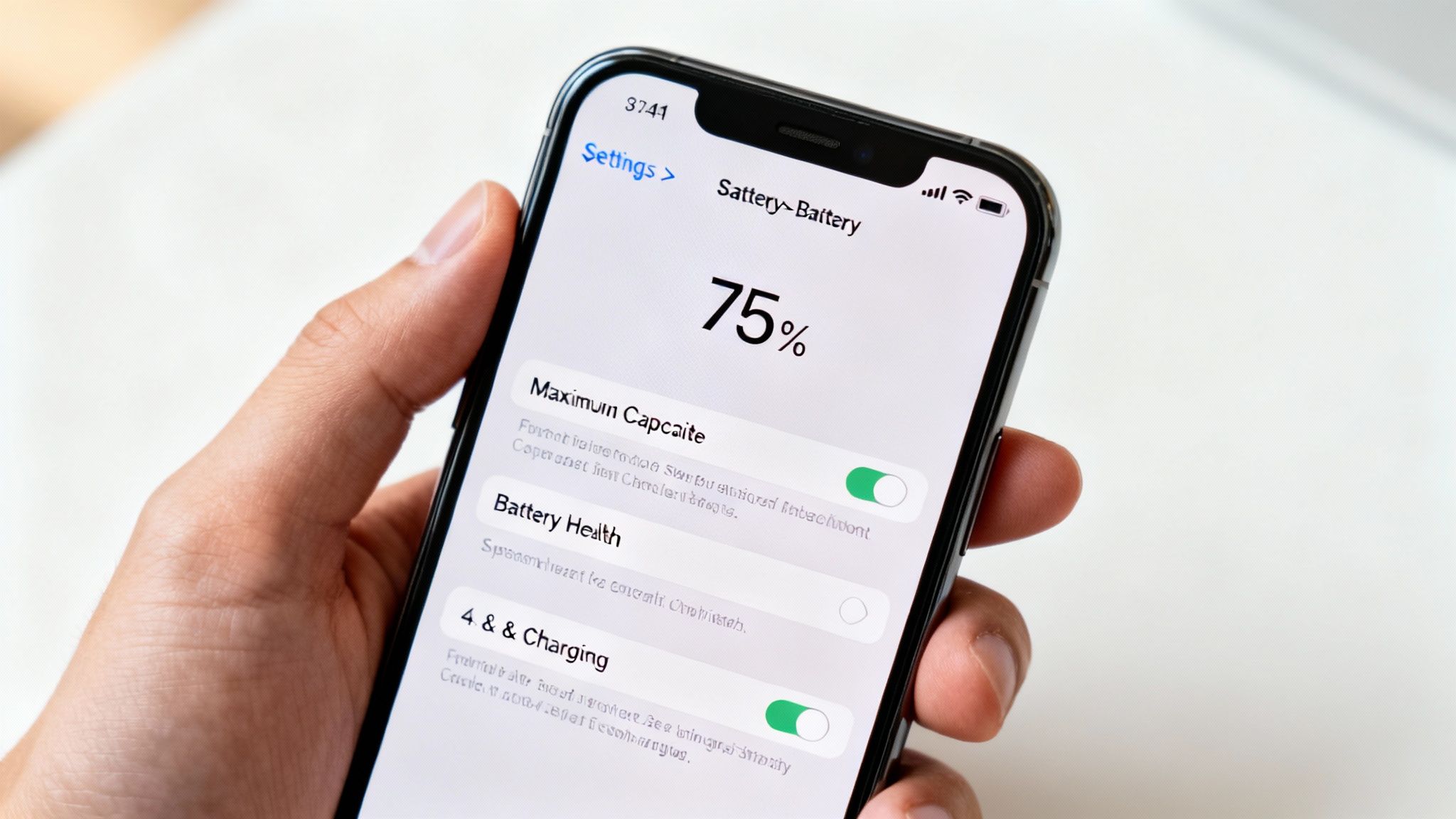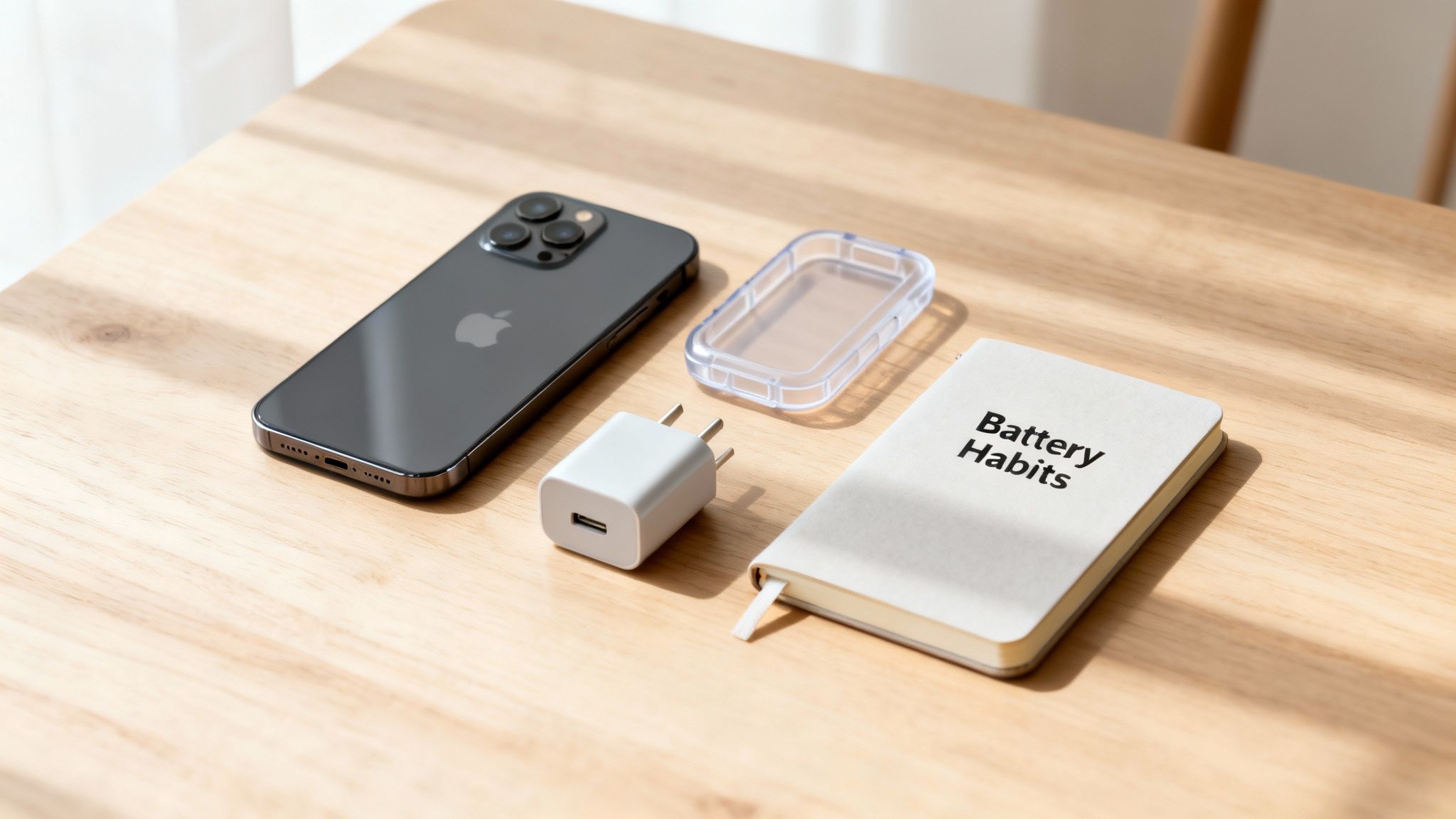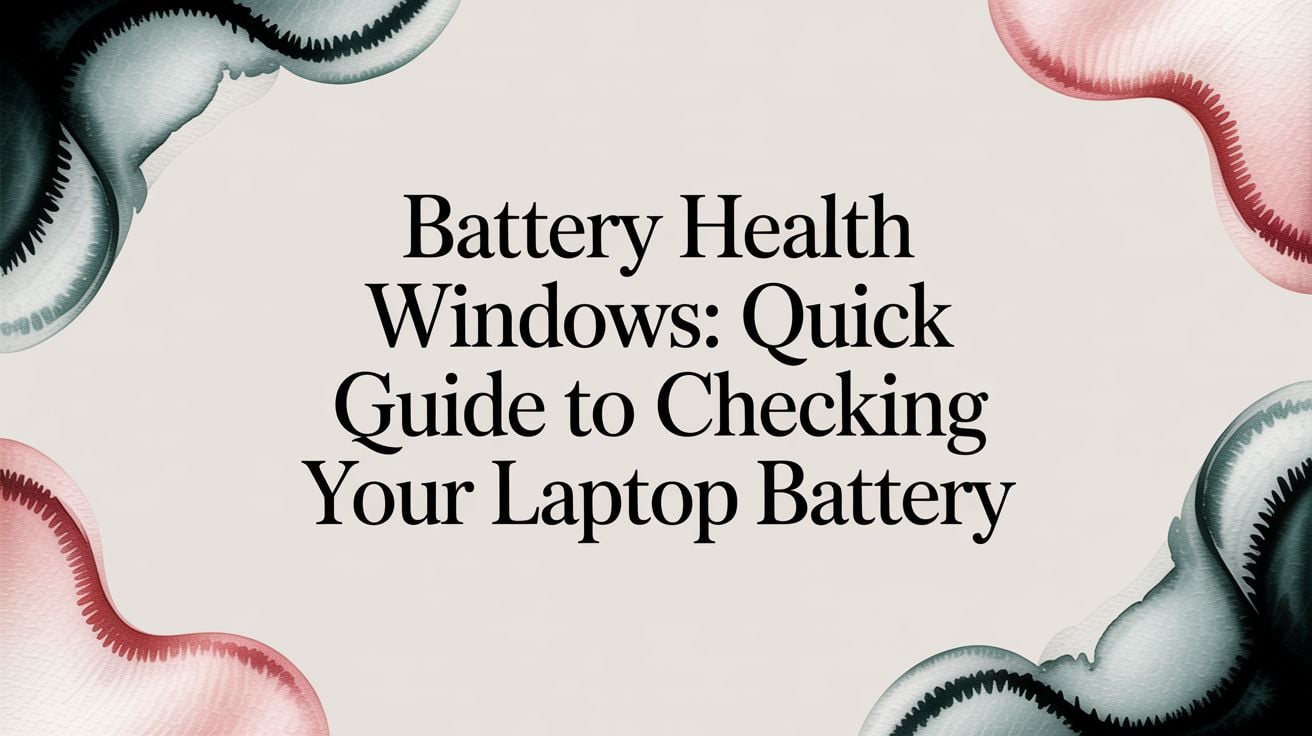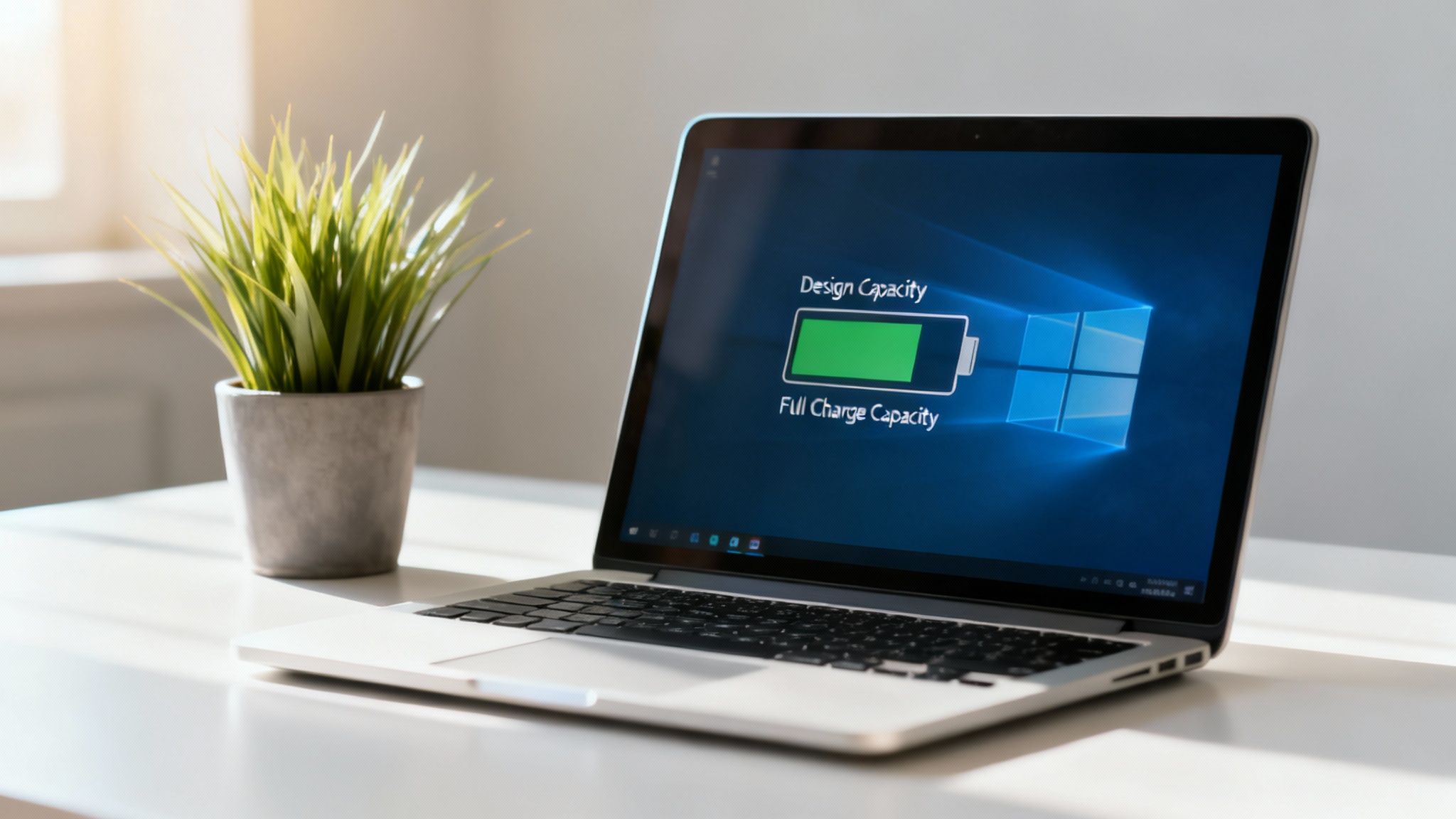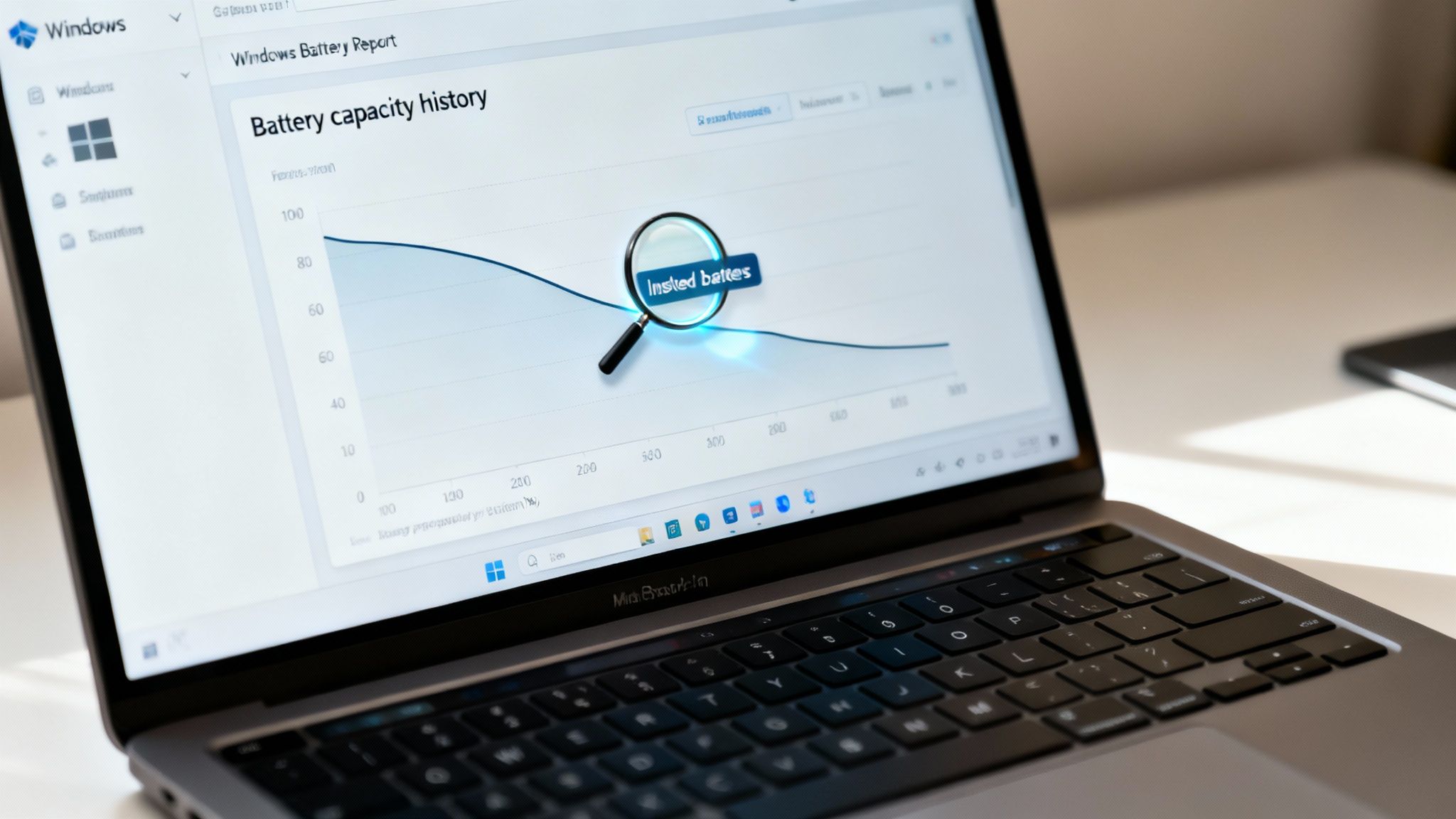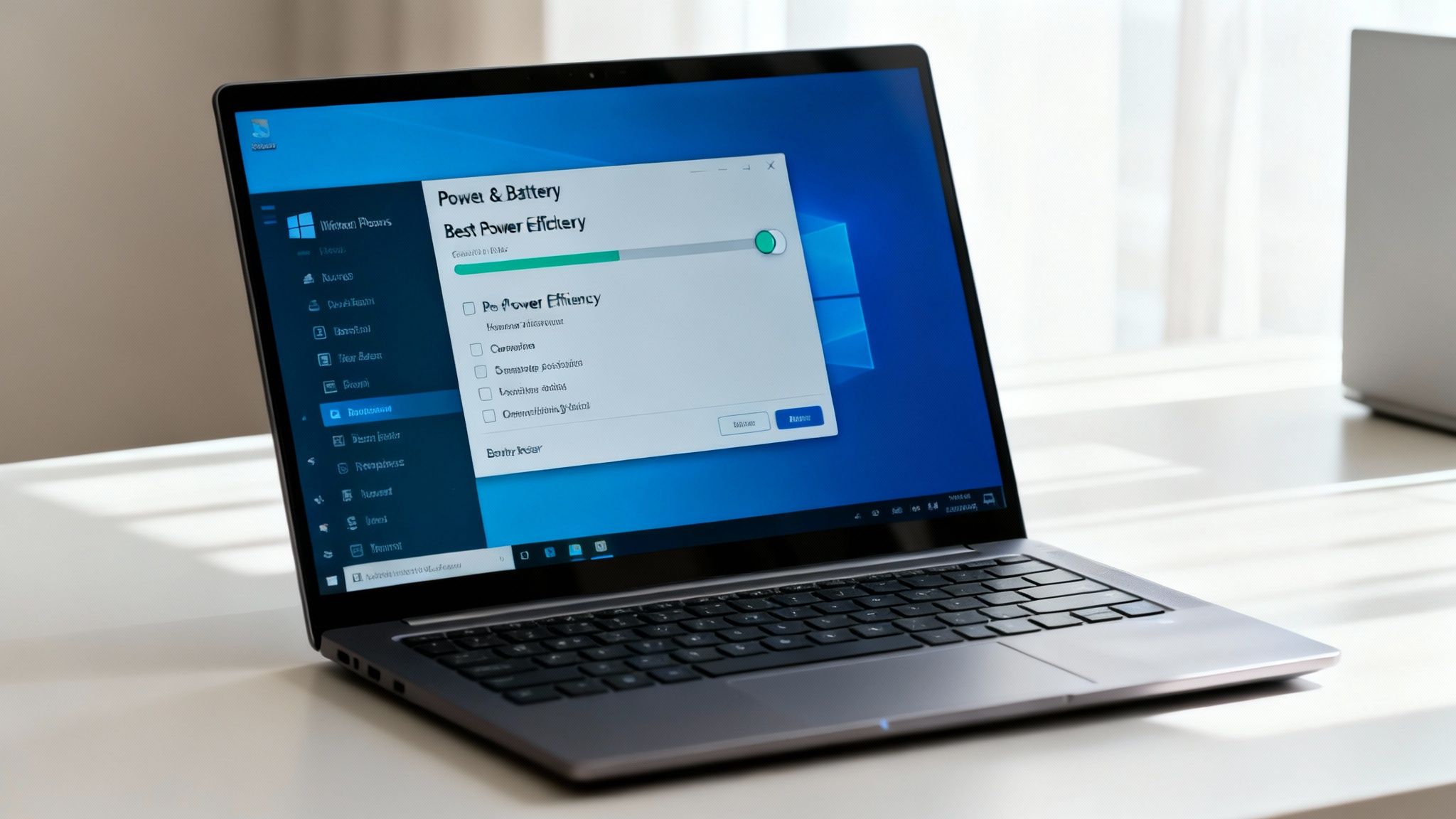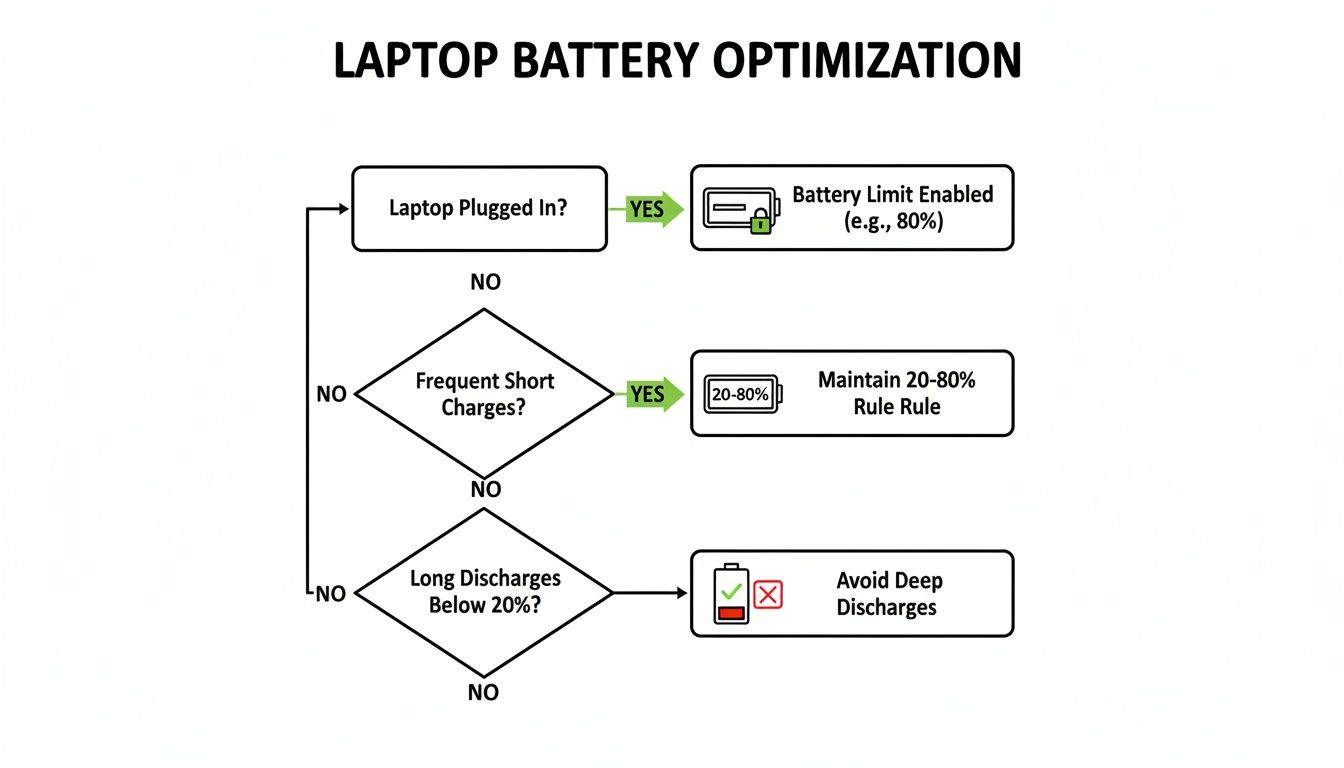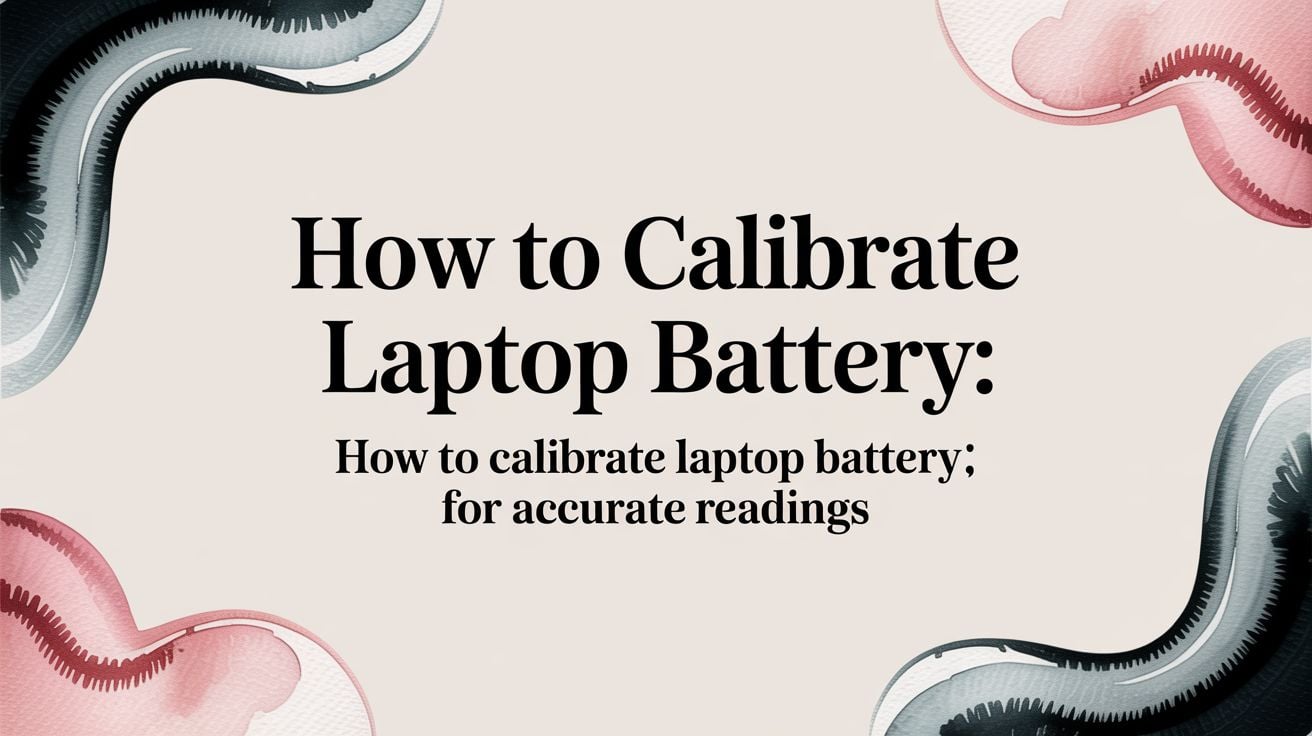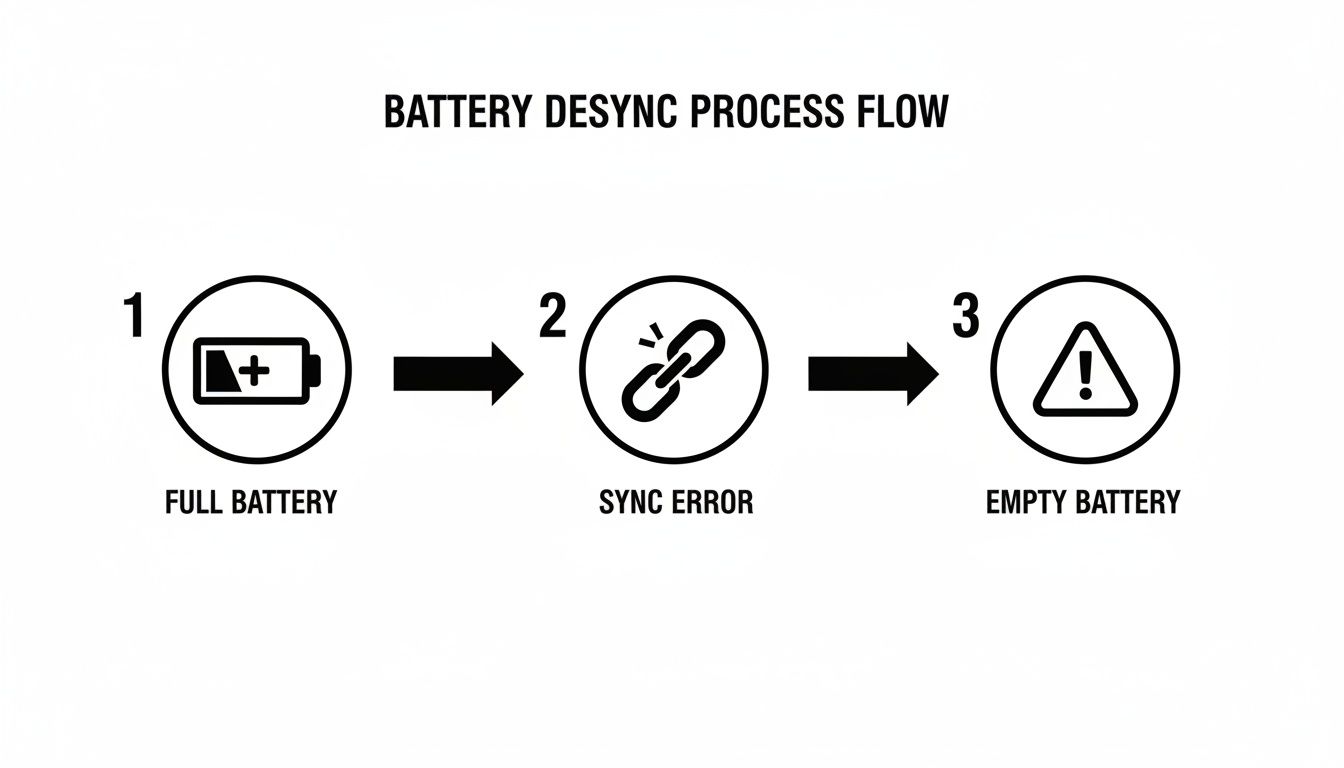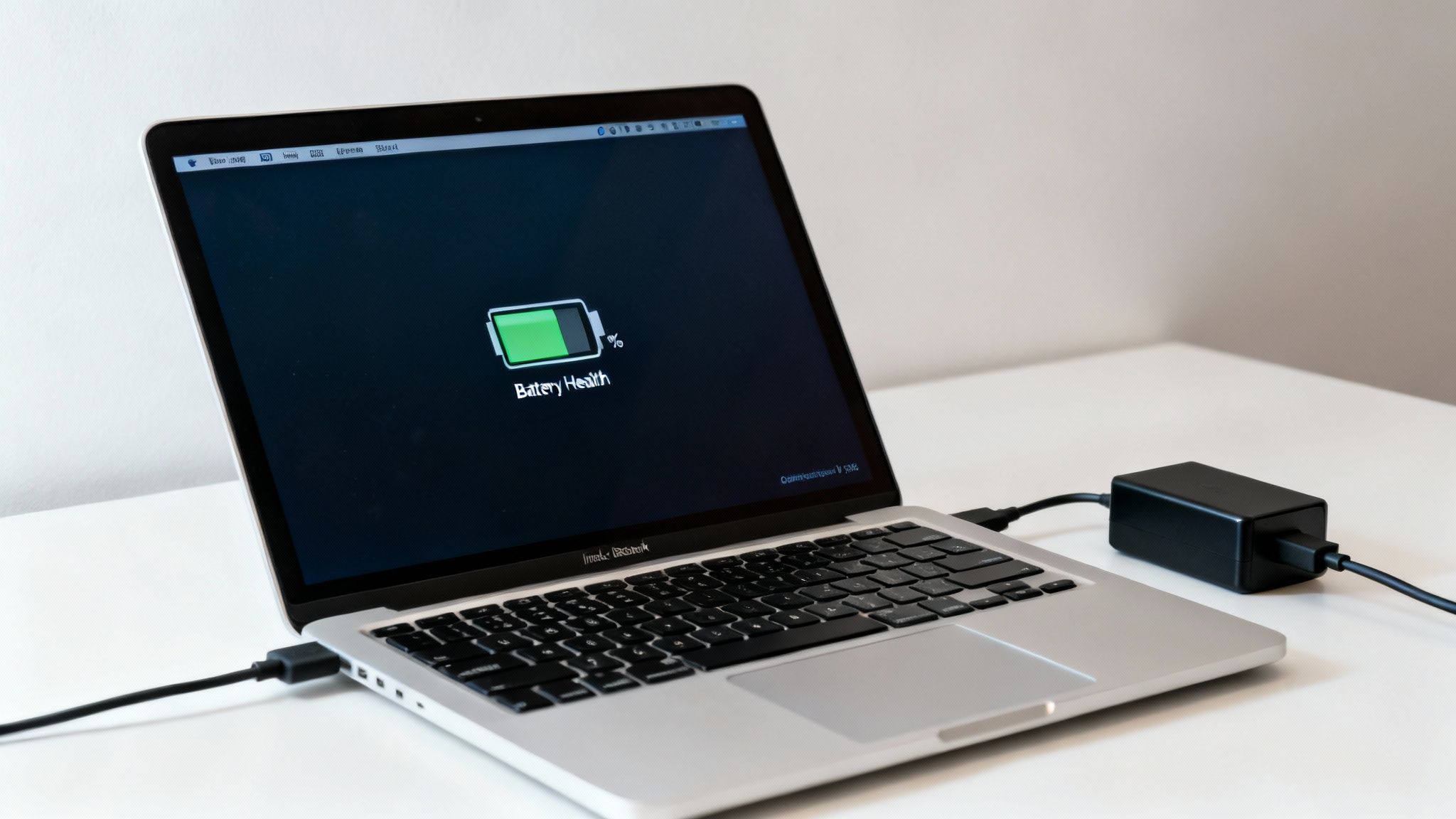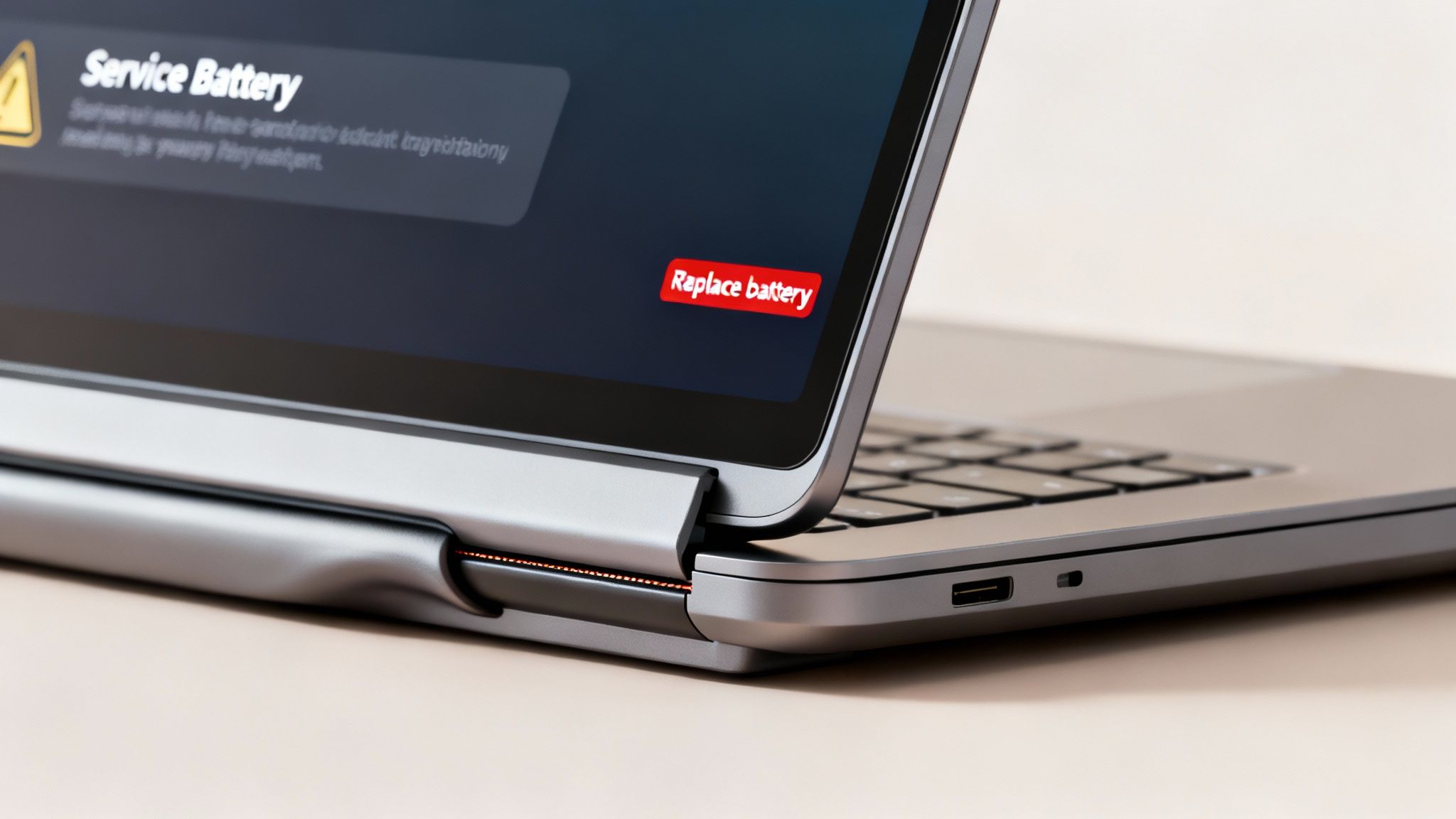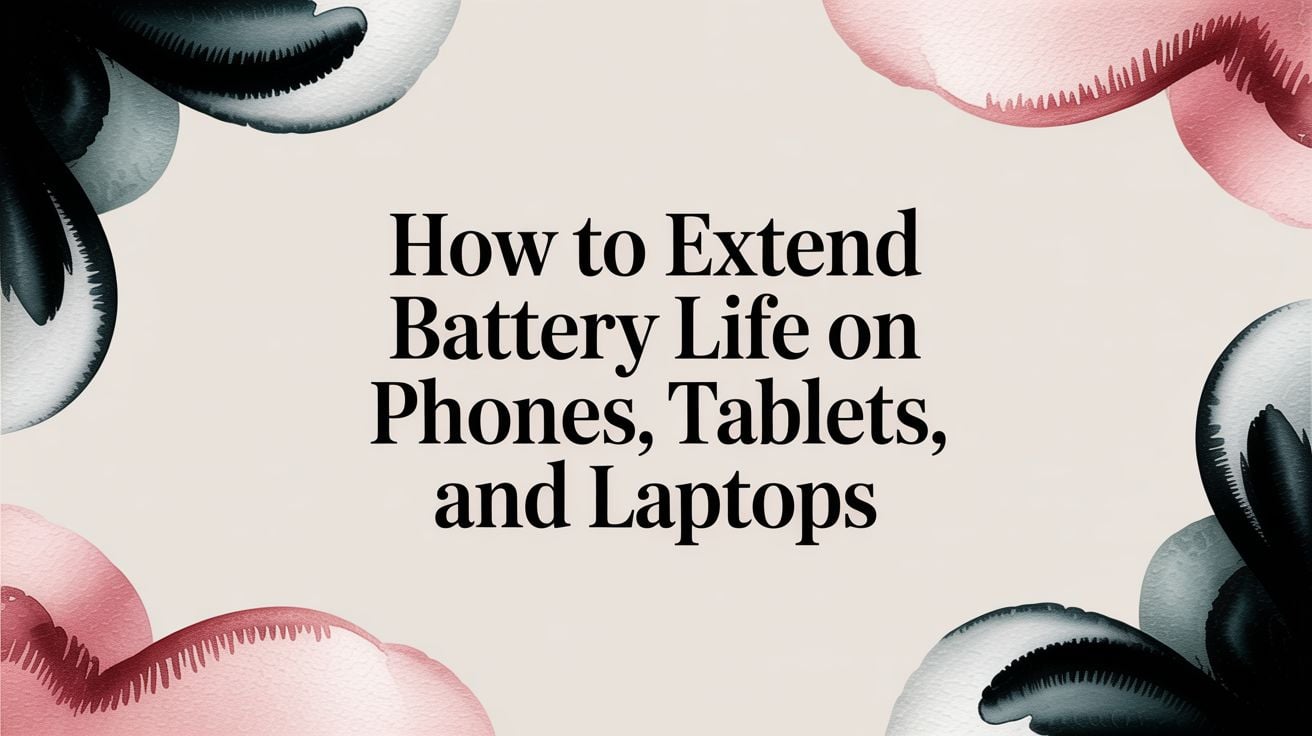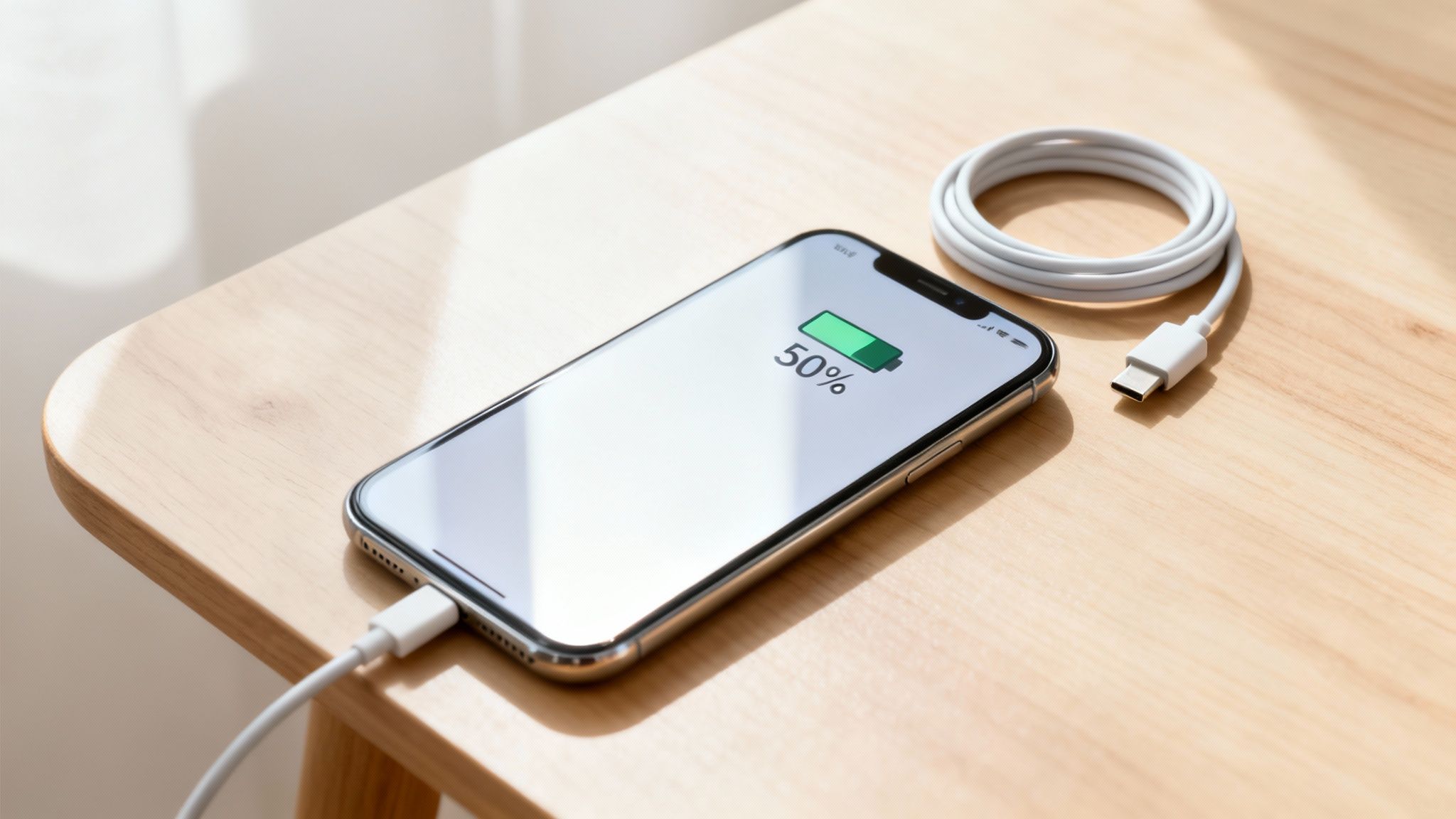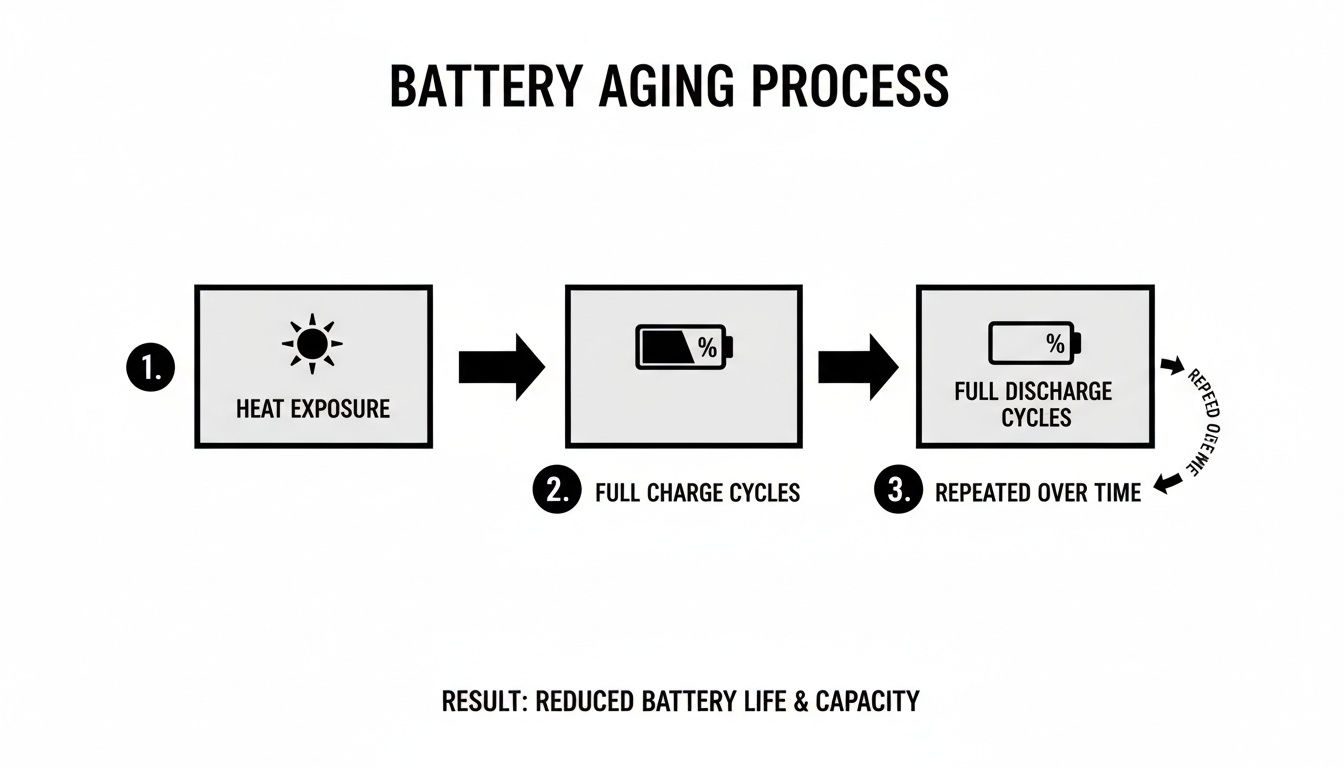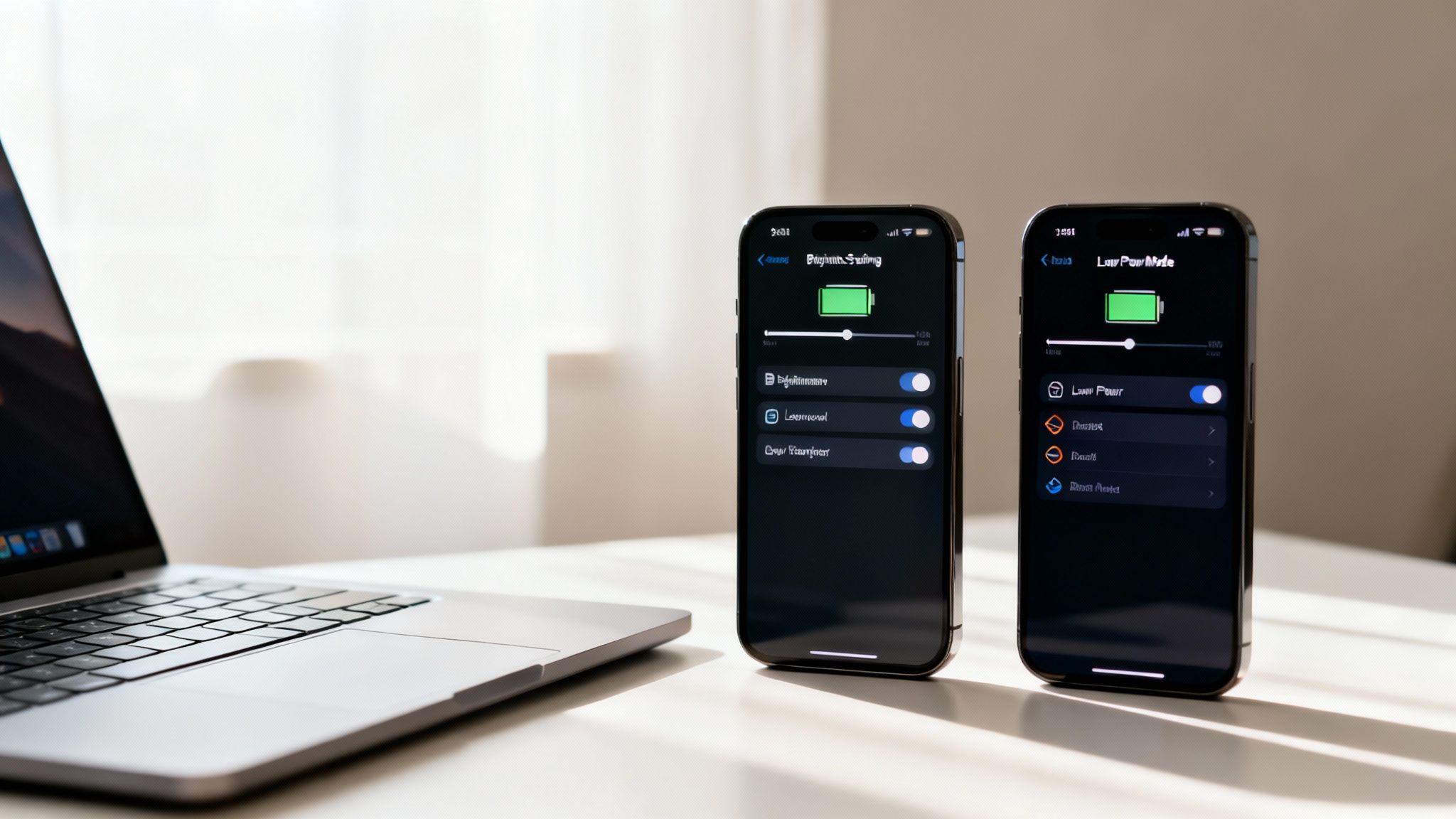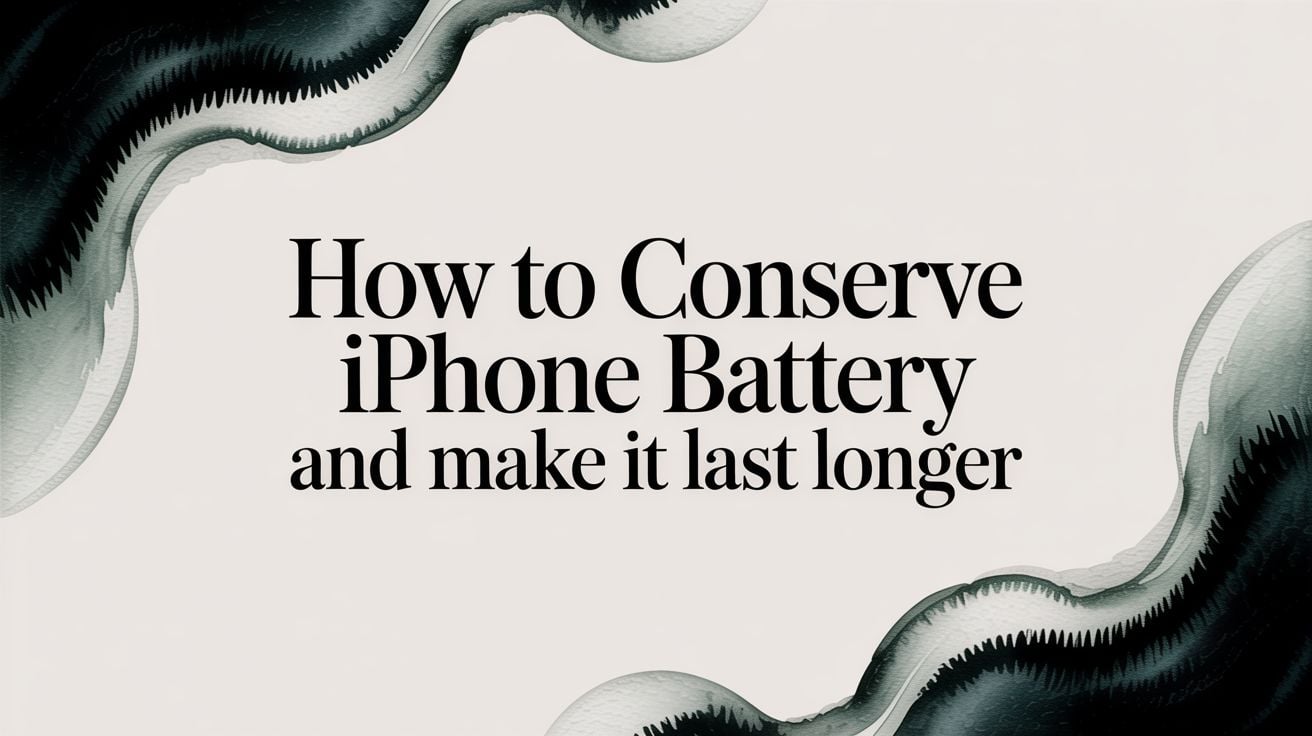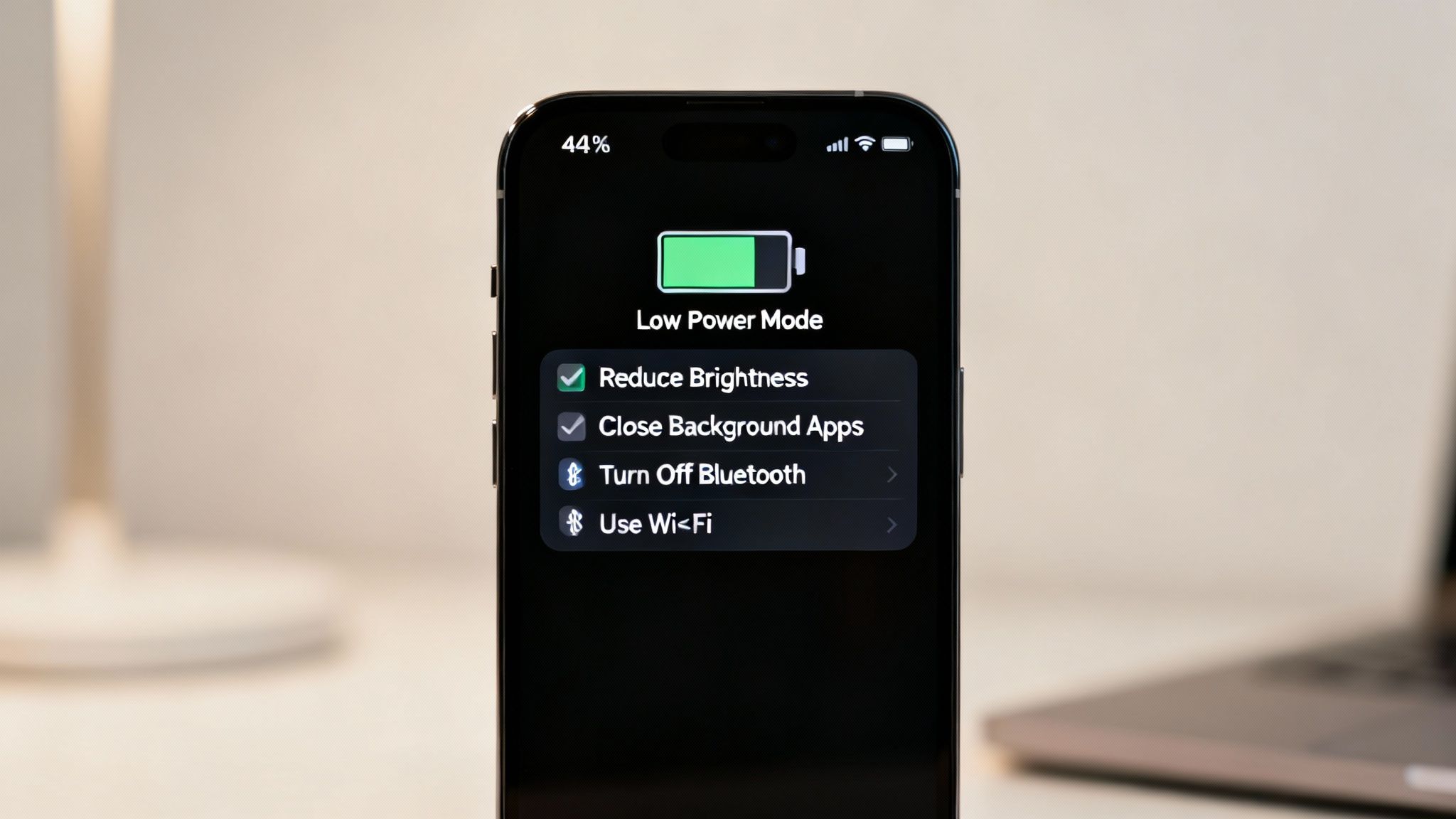Power Bank Charger How To Use: A Quick Guide to Safe, Efficient Charging
You've just unboxed your new power bank, and the first instinct is to plug your phone straight in. I get it. But hold on for just a second.
Before you do anything else, give that power bank a full, uninterrupted charge. Think of it like breaking in a new pair of shoes—a little effort up front makes all the difference for its long-term health. This first charge helps get the battery inside ready for peak performance from day one.
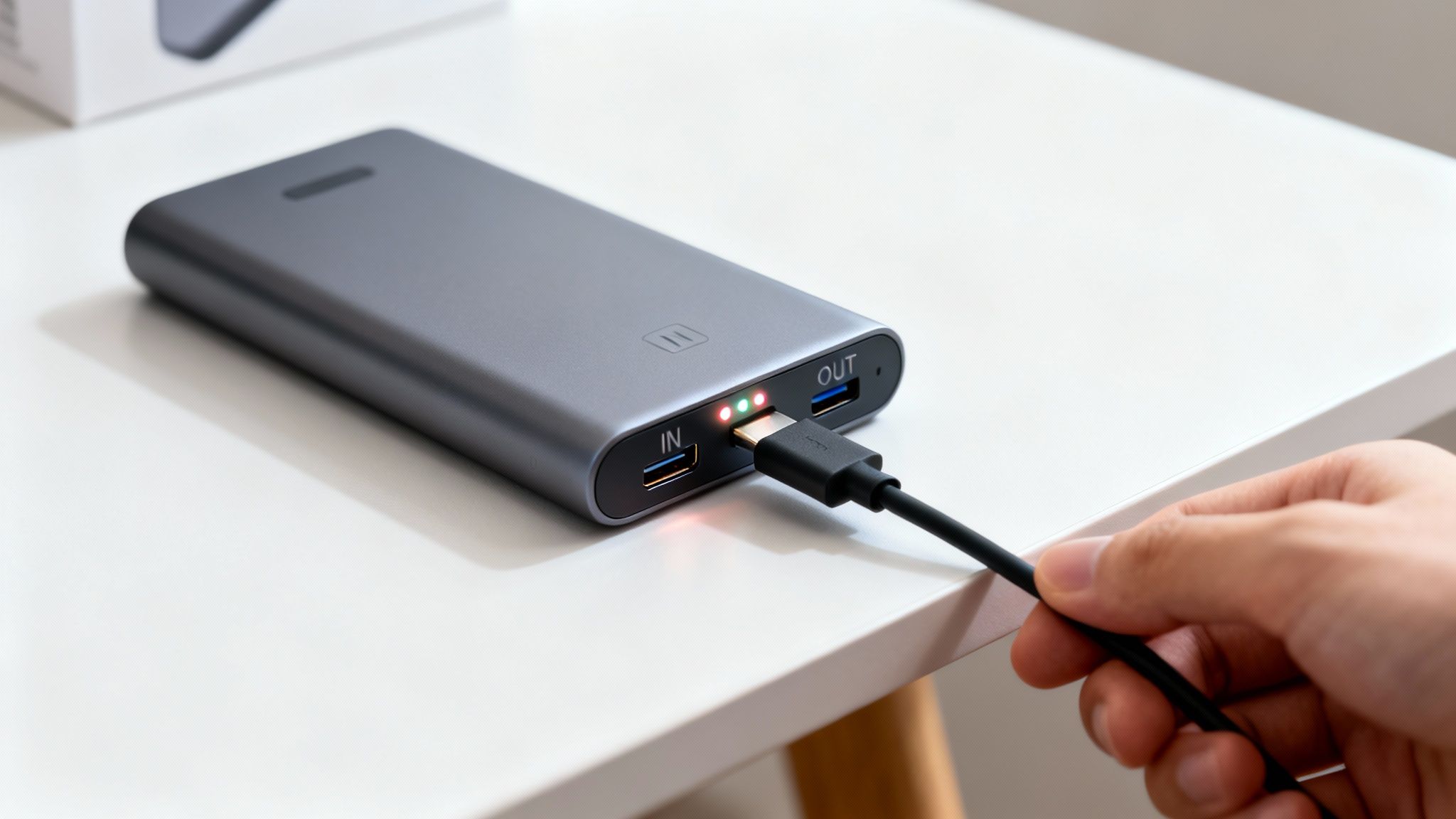
While it's charging, take a moment to get familiar with its ports. It might seem confusing at first, but it's pretty simple once you know what you're looking for.
- Input Port: This is for charging the power bank itself. You'll usually see a Micro-USB or, more commonly these days, a USB-C port.
- Output Port: This is where the magic happens—where you plug in your phone, tablet, or headphones. Most have a standard USB-A port, and many newer models include a USB-C port for faster charging.
Decoding The Blinking Lights
Those little LED lights on the side? They're your best friend for quickly checking the power bank's status. Each light typically represents about 25% of the battery's total power.
As it charges, you'll notice one light blinking, showing that it's actively pulling in power. When all the lights are solid and steady, you're officially at 100% and ready to go.
A common mistake I see people make is unplugging the power bank when only three of the four lights are solid. Always wait for that last light to stop blinking. Starting with a true 100% charge gives the battery a strong, healthy foundation.
For that first charge, grab a standard wall charger (the kind that plugs into an outlet). A typical 10,000 mAh model will take somewhere between four to six hours to fully juice up.
Here’s a pro tip for extending its lifespan: try not to let the power bank completely die. Keeping its charge above 20% most of the time is a simple habit that can extend its useful life by an impressive 20-30%. If you're interested in the data, you can dive deeper into the portable chargers and power banks market.
Charging Your Devices The Right Way

Alright, your power bank is full and ready to go. Grab your phone, tablet, or whatever else needs a boost, and plug it into one of the power bank’s output ports with a decent cable. For most quick top-ups, that's really all there is to it.
But you might run into something that seems a bit off. Say you have a 10,000 mAh power bank and a phone with a 3,000 mAh battery. In theory, you should get a little over three full charges. In the real world, though, you’ll be lucky to get two.
This isn't a faulty product; it's just how batteries work. The reason is something called charging efficiency.
Why You're Not Getting the Full Capacity
When your power bank sends energy to your phone, some of that power gets lost along the way, mostly as heat. It’s a natural part of the process for all batteries like this. Typically, only about 60% to 70% of the power bank's stored energy makes it into your device's battery.
So, that big 10,000 mAh power bank really only has between 6,000 to 7,000 mAh of usable power to give your device.
Think of it like pouring water from a big jug into a glass. No matter how steady your hand is, you’re going to spill a few drops. In the battery world, those "spilled drops" are the energy lost during the charge.
Knowing this helps set realistic expectations for a long day or a weekend away. It keeps you from getting caught off guard with a dead battery when you thought you had one more charge left.
I always tell people to do some quick mental math: if your power bank is labeled 20,000 mAh, just assume it’ll deliver around 13,000 mAh. This simple adjustment gives you a far more accurate idea of its real-world performance.
What Your Power Bank's LED Lights Mean
Those little LED lights are your fuel gauge. They're not just for decoration—they tell you exactly how much power is left, so you don't walk out the door with a nearly empty charger.
Most power banks use a simple system, though the design might vary slightly. Use this quick guide to understand the battery level of your portable charger at a glance.
What Your Power Bank's LED Lights Mean
Use this quick guide to understand the battery level of your portable charger at a glance.
| Number of Lights On/Blinking | Estimated Battery Level | What It Means For You |
|---|---|---|
| 4 Solid Lights | 75% – 100% | You're fully charged and ready for anything. |
| 3 Solid Lights | 50% – 75% | You have plenty of power for a full day out. |
| 2 Solid Lights | 25% – 50% | Good for another full phone charge, but consider recharging. |
| 1 Blinking/Solid Light | 0% – 25% | It's time to find an outlet and recharge the power bank. |
Keeping an eye on these lights is a simple habit that makes a huge difference. There's nothing worse than needing a charge only to find your power bank is already on its last leg.
How To Unlock Faster Charging Speeds
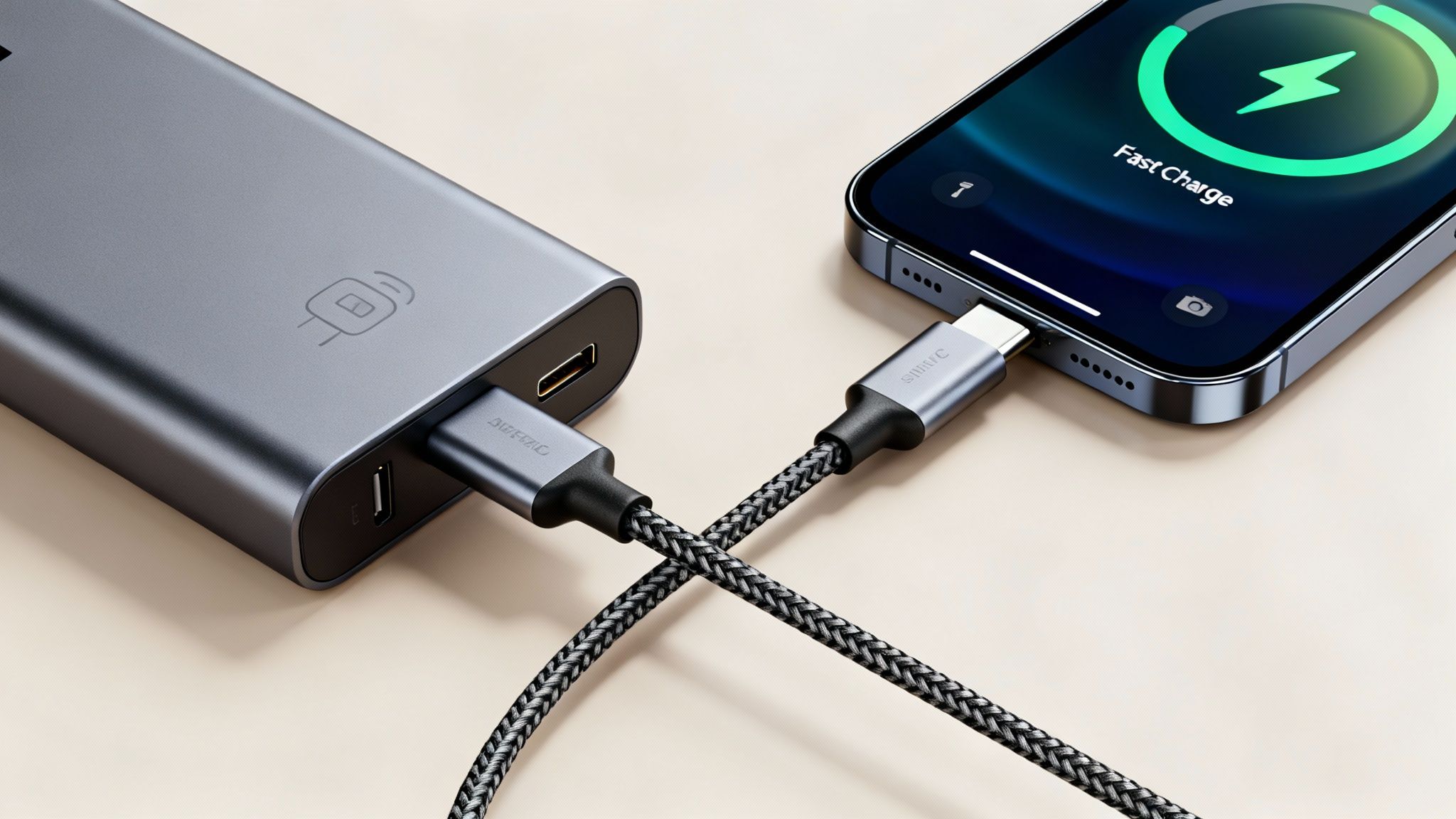
Ever find yourself staring at your phone, watching the battery percentage creep up at a snail's pace? If you're in a hurry, it's beyond frustrating. The good news is that many modern power banks have fast-charging tech built right in, but getting those speeds isn't always as simple as just plugging it in.
For fast charging to work, your power bank and your device need to speak the same "language." This usually comes in two main types: Power Delivery (PD), the standard for Apple gear and laptops, and Quick Charge (QC), which you’ll typically find on Android devices. Both are designed to safely push more power into your battery, seriously cutting down your wait time.
To make it happen, you need a matching set: the power bank, your phone, and the right cable.
Matching Your Gear for Maximum Speed
The secret to unlocking those speeds is often the cable. You can't just grab any old cord from your junk drawer and expect it to work. For the best performance, you'll need a quality USB-C to USB-C cable or, for iPhones, a USB-C to Lightning cable. These are built to handle the higher power that fast charging requires.
Take a look at the details for both your power bank and your device to see which type of fast charging they support. You'll often find "PD" or "QC" printed right on the power bank itself, usually next to the ports.
When you get it right, the results are incredible. With a matching power bank, the right cable, and a modern smartphone, you can genuinely go from 0% to 50% battery in about 30 minutes. That's enough to turn a long, anxious wait into a quick coffee break.
Getting this combination right is everything. Newer fast charging standards can deliver 65W of power or even more—enough to take a new smartphone from empty to 50% in just 20 minutes, compared to 45 minutes on a standard charger.
Understanding how it all works together is the key. Nail the setup, and you'll spend a lot less time tethered to a charger and more time actually using your devices.
Simple Habits For A Longer Battery Lifespan
Just like the battery in your phone, your power bank needs a bit of attention to keep it running strong for years. It's not complicated, really. A few simple habits can make a huge difference, ensuring you have that backup power right when you need it most.
One of the worst things you can do is consistently run it all the way down to 0%. I know it feels like you're getting every last drop of power, but it's actually putting a ton of stress on the battery inside. Do that too often, and you'll find its ability to hold a full charge starts to fade, shortening its overall life.
Instead, the trick is to keep it charged in a healthy range.
The 20% to 80% Sweet Spot
For batteries like these, the sweet spot is right between 20% and 80%. Keeping your power bank in this zone reduces the strain on its internal parts. You don't have to be obsessive about hitting those numbers exactly, but simply avoiding the extremes—completely empty or always full—will make a very real difference over time.
Think of it like a muscle. You wouldn't want to constantly push it to its absolute limit or just let it sit around doing nothing. A battery is kind of the same; it's happiest and performs best when it's not under constant strain at the very top or bottom of its power level.
This is where knowing how to use your power bank charger correctly really pays off. Little tweaks to your routine can easily add months, or even years, to its lifespan. If you really want to dive deep into this stuff, we've got more advanced tips in our guide on lithium-ion battery charging best practices.
Keep It Away From Extreme Temperatures
Another battery killer is temperature. The batteries in power banks absolutely hate extreme heat and cold. Leaving your power bank to bake in a hot car or out in freezing weather can permanently damage its ability to hold a charge.
- Hot Environments: High heat actually speeds up the aging process inside the battery. In rare cases, it can even become a safety risk.
- Cold Environments: Freezing cold can temporarily reduce a battery's power, making it far less effective until it warms back up to a normal temperature.
The good news is that most modern power banks use safer battery types. Their design is much better at preventing overheating, which reduces risks compared to older tech. Safety has improved a lot since new rules in 2018 added better protection against overcharging.
Finally, do yourself a favor and use high-quality, certified cables. A cheap, sketchy cable can deliver uneven power, which can damage both your power bank and whatever you're plugging into it. It’s a small investment that protects a much bigger one.
Powering Laptops And Multiple Gadgets At Once
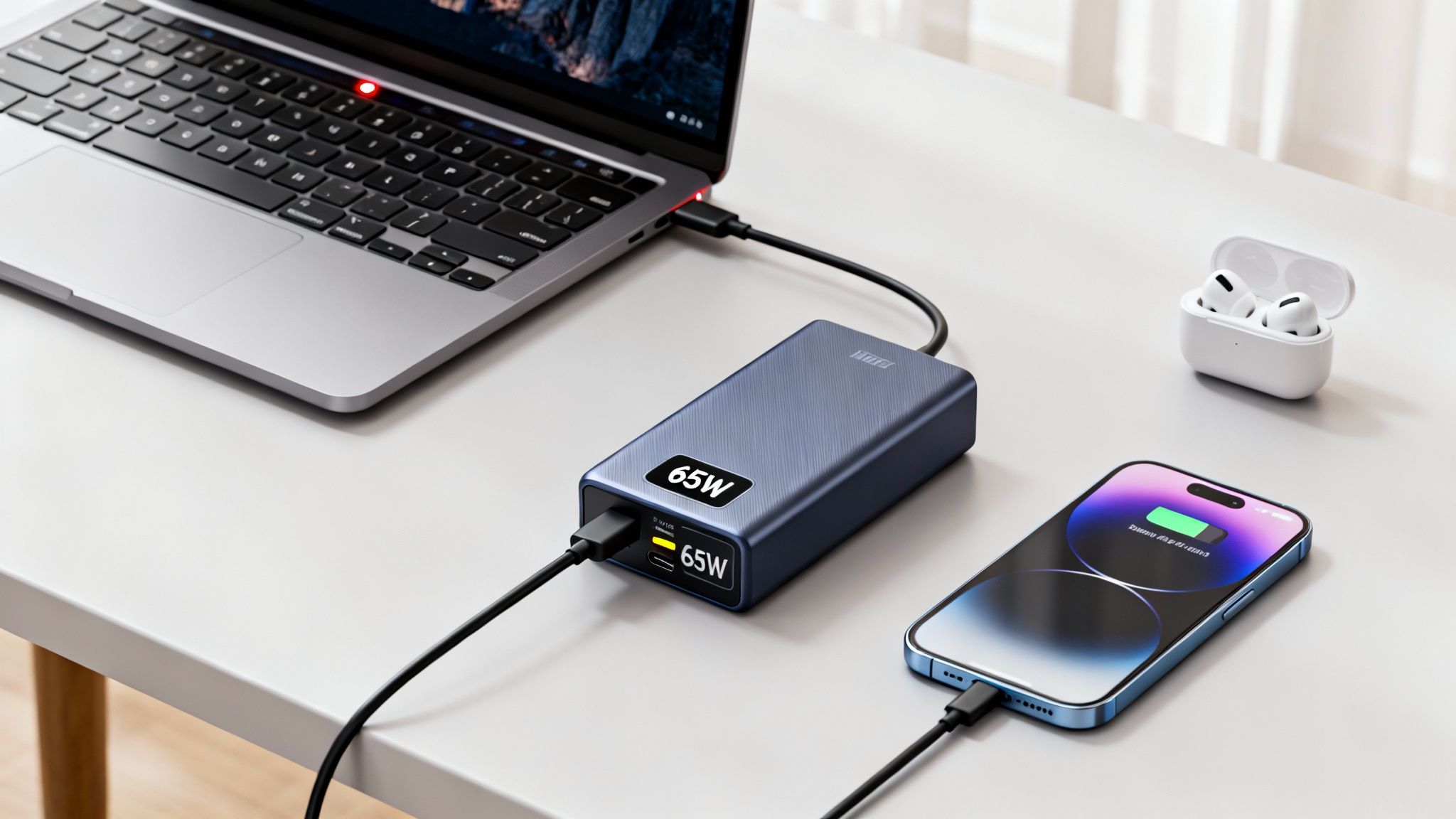
Today's power banks are absolute workhorses, capable of powering a whole lot more than just your smartphone. If you’re a remote worker, a student, or just someone juggling a full tech setup on the go, knowing how to juice up your laptop and other gadgets at the same time is a game-changer.
To give your laptop a decent charge, you really need two things: high capacity and a serious power output.
First, look for a power bank with at least 20,000 mAh. Anything less just won't give you a meaningful boost. Second, you’ll need a USB-C PD (Power Delivery) port that can push out a minimum of 65W. A weaker port will really struggle to keep up with a laptop’s power needs.
If you’re not sure what your laptop needs, we’ve got a guide on exactly how many watts are needed to charge a laptop.
Charging Multiple Devices Safely
So what happens when you plug in a laptop, a phone, and maybe your earbuds all at once? The power bank has to intelligently split its power. Most modern units handle this automatically, but it’s good to remember that the total power is shared across all ports. This just means each device might charge a little slower than it would on its own.
The market is definitely seeing a huge demand for this. High-capacity models over 20,000 mAh are growing at an annual rate of over 20% because more and more of us are charging laptops and phones at the same time.
To do this safely, you have to prevent overheating. Always use your power bank in a well-ventilated area and try to keep it from getting hotter than 50°C (122°F).
Real-World Example: I often use my own 25,000 mAh, 100W power bank to charge my MacBook Air and my iPhone at the same time. The laptop gets the biggest share of the power, as it should, while my phone gets a slower, steady charge. It’s the perfect setup for working from a coffee shop without having to hunt for an outlet.
For those really long trips or for powering multiple high-power devices, you might even want to look at bigger alternatives like portable power stations. They offer a massive step up in power and flexibility for serious off-grid needs.
Common Power Bank Questions Answered
Even after you've got the basics down, a few nagging questions always seem to pop up. Can you actually take these things on a plane? And why is it suddenly charging so slowly? Let's clear the air on some of the most common things people wonder about their power banks.
One of the biggest hang-ups is flying. The short answer is yes, you can bring your power bank on a plane, but there’s a catch: it must be in your carry-on luggage. Never, ever put it in a checked bag. Airlines limit the size to 100Wh (watt-hours), which sounds technical but covers almost every power bank up to a hefty 27,000 mAh. So, your standard charger is good to go.
Then there's the slow-charging headache. If your phone is taking forever to fill up, nine times out of ten, the cable is the problem. A cheap, frayed, or just plain bad cable can ruin charging speeds. Before you blame the power bank, always try swapping out the cable for a high-quality one you trust.
Getting The Most Out Of Every Charge
It helps to know what your power bank can really do. That 20,000 mAh number on the box isn't what you actually get at the other end of the cable. Due to power being lost during the transfer, you're realistically looking at 12,000 to 14,000 mAh of usable power. That’s still plenty—usually enough for two full iPhone charges with a little left over for a partial laptop boost.
To keep it performing like new, a few good habits go a long way.
- Keep the ports clean. A quick puff of air once a month can prevent a bad connection.
- Don't let it die. Constantly letting the battery drain to zero is harsh on it and can reduce the total number of times you can recharge it.
- Use good cables. Sticking with the original or certified cables helps keep charging as efficient as possible.
If you're curious about the tech behind these numbers, you can learn more about power bank market trends and see what's driving the industry.
Here's the single best piece of advice I can give you: store it properly. If you're not planning on using your power bank for a while, don't leave it full or empty. Charge it to around 50% and stick it in a cool, dry spot. This one simple step keeps the battery healthy and ready for your next trip.
And if you want to take that same level of care with your phone's battery to make it last for years, Chargie is a smart little device that automates optimal charging. It stops the battery aging that happens from constant 100% overnight charging. Protect your battery today with Chargie.


